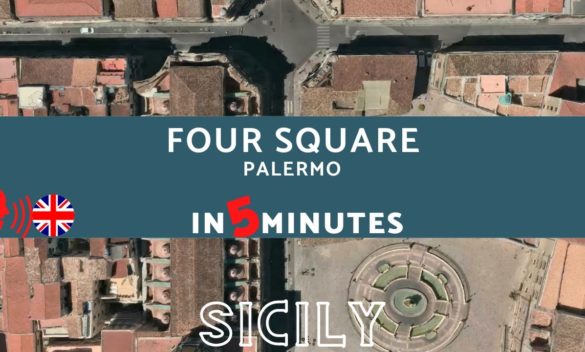Four Square – Quattro Canti | Palermo

Four Square – Quattro Canti English Version 🇬🇧
Quattro Canti is recognized as Square Vigliena, named after the Spanish viceroy who orchestrated its initial arrangement in 1620, a necessity arising from the inauguration of Via Maqueda in 1600. The intersection formed by Via Maqueda and Via Vittorio Emanuele led to the city’s division into four distinct parts known as “Mandamenti.”
⬇️ continues at the bottom
🧨 check the complete playlist: https://www.youtube.com/playlist?list=PL2W-zEkda09b0PzjfiA_uQVedkrlj1Jj3
#palermo #quattrocanti #foursquare
SEO keyword
Four Square Palermo Italy video
Quattro Canti Palermo travel vlog
Exploring Four Square in Palermo
Quattro Canti historical landmark video
Best things to see at Quattro Canti Palermo
Guarda la versione Italiana:🇮🇹 https://www.youtube.com/watch?v=PavZwYI-d8M
★★★★★★★★★★★★★★★★★★★★
➊ Search accommodation near Palermo: https://t.ly/xTFND
➋ Interesting activities in the surroundings of https://t.ly/bL3fn
‼️ Subscribe to my channel here: https://t.ly/kQEHt
📧 for any question or request please contact me at: rttpi@mac.com
★★★★★★★★★★★★★★★★★★★★
The best prices for the equipment I use for these videos:
🎥 Go Pro: https://t.ly/LSRSK
🎥 Canon M50: https://t.ly/yULbw
🎥 DJI Mini 3 drone : https://t.ly/Vi3qN
N.B. As an Amazon Affiliate, I receive a percentage of these purchases. Nothing changes for you, but if you decide to use one of these links, you will help the growth of my channel :)
★★★★★★★★★★★★★★★★★★★★
Each Mandamento derives its name from the predominant civil structure in its vicinity: Capo or Monte di Pietà, Albergheria or Palazzo Reale, Kalsa or Tribunali, and Loggia or Castellammare. Various appellations have been assigned to the baroque construction of the “quattro canti,” including the “Teatro del Sole” (Sun Theatre), as each of the four districts is illuminated by sunlight in any season, or the “Ottagono” (Octagon), referencing its geometric shape.
The square exhibits flawless circularity, with the cantons crafted from masonry stone adorned with Billiemi marble details, creating an elegant curvature. Construction of the cantons commenced in 1608 through a project by Giulio Lasso and concluded in 1621 under the supervision of Mariano Smiriglio. Each canton features three overlapping orders: Doric, Ionic, and Composite.
In the lowest order of the cantons, statues representing the “Seasons” symbolize the cyclical nature of time and nature. The middle order initially featured statues of four Spanish kings in bronze, later replaced with Carrara marble statues in 1661. At the top order, statues of the patron saints of each district — Saint Oliva, Saint Cristina, Saint Agata, and Saint Ninfa — proudly stand.
Adorning the tympanum of the balconies are angels holding palms and crowns, adding a celestial touch to the architectural marvel. At the penthouse, the Royal Spanish coat of arms stands prominently between the viceroy and praetorian coats of arms, symbolizing historical significance. In 1856, with the aim of improving rainwater disposal, the Senate decided to lower the street level of Via Maqueda, incorporating basins beneath each canton to enhance drainage, positioned underneath the fountains.
All external video material is used under the FAIR USE doctrine, Section 107 of the Copyright act of 1976. All rights are copyrighted by their respective owners. (Source: http://en.wikipedia.org/wiki/Fair_use)
Updated on 26/11/2023 18:17:44
source